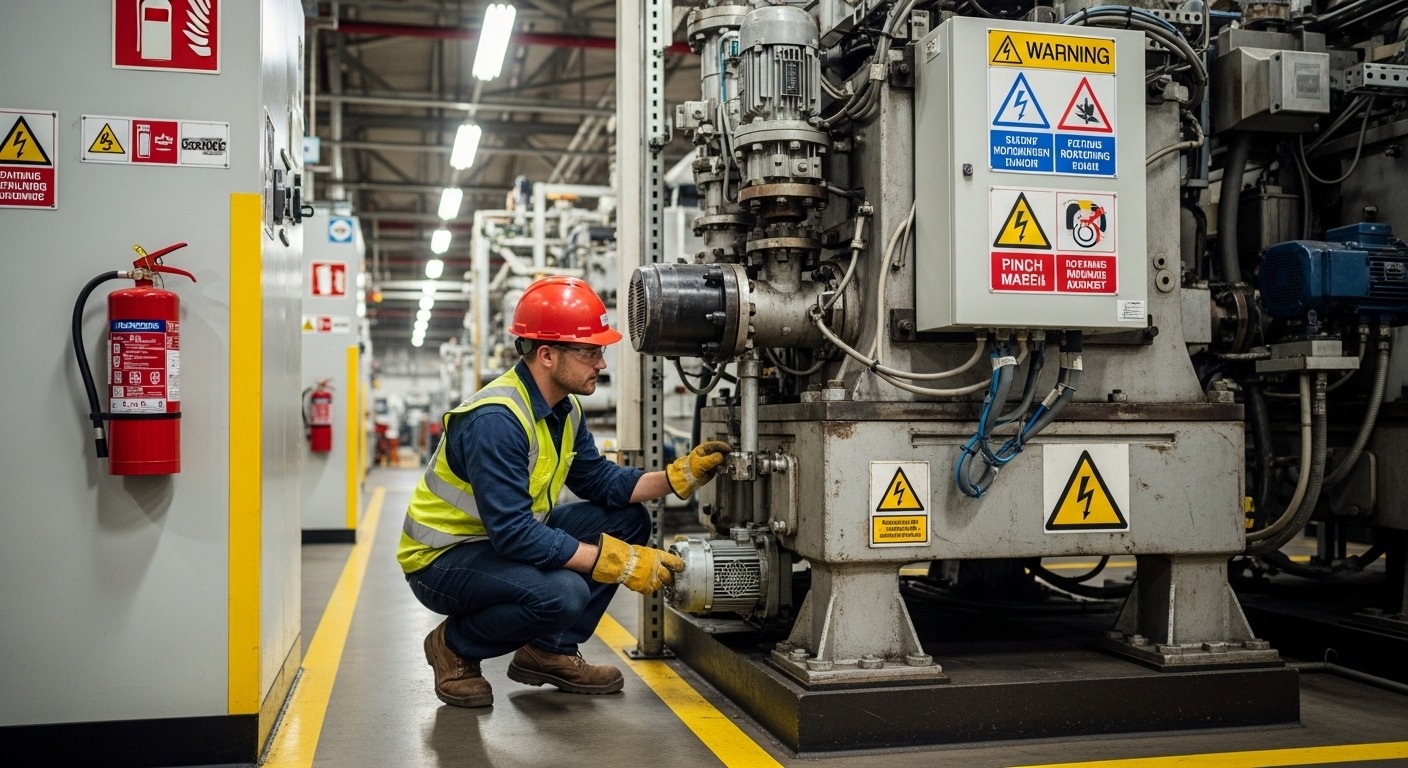
Related Blogs
How AI Improves Construction Site Security Monitoring?
10 minutes, 3 seconds
-23 Views 0 Comments 0 Likes 0 Reviews

The enhancement of security monitoring on construction sites by using AI is no longer a question of technology, but rather of calmness. Construction sites are high-risk and busy areas full of machinery that is well worth maintaining, materials, and people on the move. The past method of using guards and CCTV cameras is no more. In the modern world, artificial intelligence (AI) intervenes to accomplish tasks that are impossible for humans: 24/7 surveillance, foresight of possible danger, and immediate reaction to danger.
The thing is that AI is not opposing human vigilance. It’s amplifying it. Since it can be used to detect motion or send real-time notifications, AI-based surveillance systems are changing the way we make job sites safe, efficient, and accountable. We will do it step by step.
The Truth behind the Conventional Construction Site Security
They have been the hot spots of theft, accidents, and trespassing as well as construction sites. Despite the guards and cameras, the human factor or the lagging speed of reaction may result in significant losses.
Guards can only monitor a limited number of camera feeds at once, and factors like fatigue, poor lighting, or distractions can easily result in missed incidents. With more than 25% of construction firms experiencing theft or vandalism annually due to inadequate surveillance or slow responses, proper planning is critical. USA estimating services help project managers accurately forecast costs for AI-based security upgrades, ensuring budgets are realistic while enhancing site safety, making smarter financial decisions, and safer operations possible in one step.
What Makes AI Different?
AI security monitors do not monitor activity, but they comprehend it. AI systems can differentiate between normal and threats in real time through intelligent algorithms and machine learning.
1. Motion and Smart Object Detection
Artificial intelligence-based cameras can distinguish between an employee and an intruder, a truck and an animal, and even patterns of movements during day and night. This translates into the reduction of false alarms and rapid response in case something really goes bad.
2. Predictive Threat Analysis
AI predicts an incident rather than waiting until one takes place. Using the past data, such as movement patterns or entry times, AI systems can predict when some abnormal behavior may happen in the future, which sends early alerts.
3. Live-time Notifications and Auto-responses
With AI, supervisors or security teams will be informed immediately upon the realization of an anomaly. Suppose that someone pops up on your phone screen as unauthorised personnel are in a restricted area at midnight. No waiting. No guesswork. Immediate awareness.
4. Drones and IoT Devices Integration
AI-powered drones will be able to patrol large locations on their own. They sense heat, unauthorized movement, or even unsafe working practices. These systems, together with IoT sensors, form a connected and intelligent ecosystem that constantly scans every corner of a site.
Boosting Safety for Workers

AI does not exclude intruders only, but it also secures the individuals who spend time there. AI vision cameras are able to detect when the workers are not wearing helmets or safety vests. They are also able to sense slips, falls, or being in the range of hazardous machinery and notify the supervisors before it gets worse.
This actually translates to an improvement in accidents and a safer working environment- a dream that every construction manager will want to have.
The Behaviour of AI towards Environmental and Equipment Risks
Construction sites do not qualify as places that are susceptible to theft or human error only. Massive setbacks may happen due to weather, fire, and equipment failure. The new AI systems have environmental sensors that can monitor the changes in heat, humidity, and vibrations.
As an example, when a generator overheats or an electrical issue arises, the AI will identify it in time and provide an alert. This can be done by early intervention, and this saves accidents, downtime, and thousands of dollars in damages.
The Beneficial Effect on the Project Effectiveness
Security is not only about being safe but also about being productive. Human resources will enjoy doing important work rather than spending hours and hours on monitoring with AI systems performing the surveillance work.
AI also maintains logs and video records, which can be used in compliance and insurance claims. These computerized records are the impartial evidence in case of arguments or investigations, and the whole project becomes more transparent and responsible.
Frequent Myths in AI in Construction Security

Nevertheless, the cost or complexity concerns as the reasons that make some construction companies unwilling to implement AI despite its benefits. Let’s clear the air.
AI Systems are too Expensive
Not anymore. Cloud-based AI security tools are also becoming more affordable, and this is taking into consideration the fact that they save a lot of money by averting theft or delays.
AI Replaces Human Workers
Nope. AI assists, not replaces. Security guards continue to be very crucial; however, this time they have smart technology to back them up.
Artificial Intelligence Is Difficult to Operate.
The majority of the current AI systems are simplistic in nature. They are accompanied by easy-to-use dashboards, mobile capability, and connection options that do not require many technical abilities.
Real-Life Case Study: AI in Action
One of the biggest construction firms in the State of Texas incorporated AI-based video analytics into the security system. In six months, the site theft had reduced by 40 percent, and accident reporting had significantly increased.
AI recognized illegal cars, checked safety equipment, even overheated equipment in machines and all this was identified before things could get out of hand. The result? Less loss, increased spirits and less turbulent work processes.
The Future of AI on the Construction Site Security
With the development of AI, it is becoming more of an active prevention than passive one. The new generation systems will have facial recognition as a means of authorized access, emotion identification to determine fatigue among workers, and enhanced heat maps to streamline site layouts in order to be safe. It is an upward trend, and a safer future than ever.
Conclusion
Looking over the shoulder of the way AI enhances security surveillance in construction sites, it is not just about cameras or sensors. It is concerned with smarter choices, minimal risks, and a better environment for all workers in the field. AI also takes security as a proactive, but not reactive solution, which empowers construction firms to avert issues before they occur.
That is why, no matter what project you are dealing with, or a huge development, AI is not so much an expense as something that will guarantee you rest and grow professionally.
FAQs
When can AI systems enhance security within a construction site?
The majority of the AI-based monitoring systems can begin giving results after several weeks of installation. The machine learning models become smarter with the increase in on-site data they process.
Should AI security surveillance be used in small construction projects?
Absolutely. Scalable AI systems can be tailored to fit small, mid-sized, or large projects. Even basic AI-enabled cameras can significantly reduce theft and improve worker safety.
Can AI prevent accidents caused by human error?
Yes, AI helps reduce human error by identifying unsafe behaviors, like workers entering restricted zones or operating without protective gear. Early warnings mean faster responses.
AI in Construction Construction Site Security Real-time Monitoring






Share this page with your family and friends.